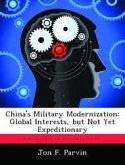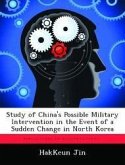As China's power rises and its national interests expand, China will seek to maintain its own "freedom of action" in controlling threats to Chinese sovereignty and economic lines of communication. China's long-term military aims will support its vision as a regional power. With a ring of influence in the Western Pacific, China's military will have sufficient power to prevent outside efforts to intervene in China's affairs. Taiwan will remain the most likely near-term source of China-U.S. conflict, but the probability of conflict over Taiwan will diminish by 2030 as peaceful reconciliation progresses. As China's interests expand globally, protecting lines of commerce and access to natural resources may also prompt China to flex its newly developed military powers. If current economic trends continue, Chinese national power may rival or even exceed that of the United States by 2030. The lack of Chinese transparency makes it difficult to precisely assess their current strength and ascertain future intentions. However, it is plausible that the current economic trends will enable military growth to continue at a remarkable pace, and that at least regionally, China will be a dangerous military peer to the United States in 2030. As a military peer, China will create different challenges for the United States than any previous potential adversary. China's military is a complex combination of old and new-from Sun Tzu to cyberspace-but the spoils of economic success have combined with a unique military culture to produce, at least by 2030, a capable, regional military peer to the United States with particular emphasis on anti-access capabilities and asymmetric effects. This paper begins with a look at China's past and how the military evolved to what it is today. It then examines current Chinese military organization and discusses China's distinctive military strategy and culture. It then provides and overview of current Chinese military capabilities. Lastly, it analyzes Chi








